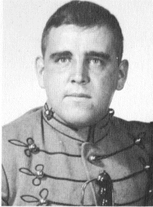
PMC Colleges![]()
Class of 1966
User Forums
| Forum: A PMC NARRATIVE | |||||
|
|||||
|
Henry Faryna
 Posts: 2 View Profile |
PMC Rangers Capture Fort Mifflin Posted Friday, August 17, 2018 02:08 AM I am wondering if one or two of our class out there were members of Captain Detlie's PMC Ranger Platoon. It was in my sophmore or junior year, can't be sure which. I was not an official member of the Ranger Platoon; mainly because they did PT most days of the week and I could not bring myself to abuse my body in such ways. However I was invited by my ski buddy John Finn (a Ranger Platoon member) to participate on several battles against other university Ranger Platoons. The two that I participated in were 1 - attacking a defended Fort Mifflin (a Revolutionary War historical site located on the Delaware River out by the Philadelphia Airport) and 2 - a winter battle weekend at Fort Indian Town Gap against (I uncertainly recall) Drexel University Ranger Platoon. The Fort Mifflin attack started on a Friday or Saturday evening at dusk with us all stripping down and rolling our fatigues, boots, black watch cap, uniform cap, snacks, water, ammo, knives and rifle in our panchos and tying up tightly, which we used as a float. We then pushed the floating pancho bundle ahead of us and swam across a 1/4 mile mud bottomed, swampy, water approach to the fort through water laced with oil, dead fish, dead bugs, dead animals and lots of scum and grime. The Ranger Platoon (about 20 of us that night) made a quiet, unobserved landing about 500 feet from the fort in the dark about 8:30 on a near moonless night. We were wet, covered in mud, smelled very bad, and not in a good mood - certainly not ready to be sociable with our worthy opponents. We were organized into teams of four; assigned our sectors, and set about in extreme stealth mode (slings and swivels taped with electrical tape so as not to jingle, mud on all exposed skin, black woolen cap, etc.) to scope out the situation, look for a way to conduct the attack and take the fort. When we regrouped an hour later we shared our observations. The fort had 16 foot high vertical stone walls on all sides. The opposing university ranger team members were concentrated at the big wooden doors (the main entrance) which were barred shut. There were about 8 defenders on the ramparts near the doors. We couldn't see them but we could hear them whispering and at times talking to each other. We could clearly make out the conversations in the quiet late September night air. About 10 other defenders were spotted at various locations on the ramparts just behind the top of the wall. It was agreed that we would nap till midnight and let the defenders get tired. Four of our 4 man teams were to scale the walls at the most undefended spots. A fifth team of four was to create a diversion at the main gate as a signal for us to start the attack shortly after midnight. Luckily there were big guys and smaller guys on each of our teams. We organized our team with the biggest team member on the bottom, standing up with a second person standing on his shoulders; The third person was to stand on the ground steadying the first and second members. This all took a few tries, I remember that there were two or three tumbles when we all collapsed in heaps on the ground on top of each other till we got it right. The fourth team member was to climb up the human ladder with a rifle, ammo, gear and a rope and get over the wall and on to the ramparts. (At that time I weighed about 135 pounds and was hands dowwn the most certifiable member of the team {even though I was not a member} - and did this kind of stuff just for kicks, when not spending a weekend with a willing like-minded young woman and a half gallon bottles of that Spanish wine that came in big woven reed bottle covers). Needless to say I was chosen to scale the human ladder, get over the wall and take out any hapless opposition student (in total silence)...then drop the rope down for my team to follow me up and in. (Everyone knew I would not hesitate to put a marine K-bar knife to some unlucky basterd's throat and advise them not to make a sound.) After several tries and falls (don't forget that combat boots from people above on the human ladder were raising hell with everyone's shoulders) ... plus ...I must admit that I stepped on the head of the top guy as I was boosting myself over the wall). Anyway, I made it up and over the wall and found no defenders in the area. Our diversonary team was pounding on the front gate, throwing improvised scaling ladders (made from saplings and branches) on the gate and shooting at the guards on the wall around the front gate. It was a successful diversion and drew most of the wall defenders away. Our four man team got in and joined the three other teams whooping it up shooting anybody we could find with our blanks and pouring down mayhem upon the poor unfortunate souls defending the fort. We shot each defender at least 10 times at closer and closer range ... untill they openly agreed with us that they were "wounded" and then took them prisoner. By then it was after 1 AM, we were all dead tired. We drove back to PMC, cleaned our gear, turned it in and went back to the dorms to take showers and collapse in our beds. ____________ After we graduated, three years passed till I crossed paths with Captain Detlie. He was a Major by then, assigned to the advance party of an airborne brigade that was to fly from the United States to South Korea (without getting off their airplanes) and airdrop into South Korea with all their battle equipment (jeeps, mules, mortor, small wheeled artillery etc.). It was late August of 1969. Major Detlie and I recognized each other immediately. He greeted me with his usual drawl and sneer of contempt - which signaled to me that he was OK and getting by. I was a Captain by then and tasked by the Eighth Field Army Support Command headquarters as the Movement Control officer in charge of providing the transportation support that the Airborn Brigade would need during the jump and the exercise. After all the briefings and hand shakings it was agreed that 200 trucks for 2 weeks would be sufficient. Two weeks later, when the exercise started, I had 2 transportation movement control NCO's working for me and took one of the truck battalions that we had available to my unit for this support mission. I put the truck battalion on an abandoned airfield on Camp Humphries and used it to meet the transportation support requests that would come in each day to my two movement control NCO's during the duration of our support mission. One transportation NCO (an E-8) and I camped out in a semi tractor trailer near the drop zone and the other NCO (an E-7) was camped with the truck battalion on an old runway at Camp Humphries about 30 miles away. We used the trucks to move the airborne troops around the "battlefield" in support of their needs and trucked a full 50% of the jeeps, mules, ammo, artillery and other large equipment items that did not survive the air drop to a salvage yard that had been set up at Camp Humphries for the mission. In 1969 (during the last of my three years of active duty in the US Army) I was the executive officer of the 25th Transportation Movement Control Center headquarted at the train station in Soul, Korea. It was a Battalion, commanded by a LTC with 135 US Soldiers, 3 DAC civilians and 135 Korean National civilian movement control specialists. (There were only 3 of these units in existance at the time, one in Germany, one in South Korea and one in the United States.) We staffed 35 field offices spread about all of South Korea and we had an officer and several NCO's that ran the airport at Kimpo. We had assets consisting of the Kimpo Airport, 2 truck battalions, 400 rail cars, and 200 commercial gold-flow contract civilian trucks that we tasked out on a daily basis to support all US forces in South Korea. A cargo helicopter company also became a daily asset for use in moving classified cargo in November of 1969, just as I was leaving the Army. Henry Faryna
|
||||
|
|||||
|
D. Clark Wonderland
 Joined: 08/26/14 Posts: 18 View Profile |
RE: PMC Rangers Capture Fort Mifflin Posted Friday, August 17, 2018 05:56 PM The guys from our class, as I remember, who were in the Ranger Platoon were: Glenn Dennis, Denny Isom, Gary Beauregard, D? Grealish, Mike Stalkus, Bill Symolin and Henry Faryna. There may have been others but that's the best I can do. I visited Ft Mifflin many times. My Reserve Unit, 358th Civil Affairs Bgd., was very involved in repair and maintenance of the Ft. It was nothing but swamps and bogs around the Fort. You went thru trash dumps and junk yards to get there, so I understand what Henry says about slogging thru muck and mire to get there. |
||||
|
|||||
|
Robert J. Grosch
 Joined: 08/26/14 Posts: 57 View Profile |
PMC Rangers Capture Fort Mifflin Posted Saturday, August 18, 2018 11:43 AM Clark/Henry...I think Capt. Detlie did an outstanding job with the "PMC Ranger Platoon". I remember walking to my room after a home game and Capt. Detlie was walking in the same direction, we talked about the game,(He made most home and away games),he explained to me what the Range Platoon was all about. Clark this what Capt. Detle said, (in efffect), what he wanted to accomplish. (There was no Ranger Platoon until Detlie came, so it was his baby from day one). "All the things you guys are learning at PMC are good he said, but the Ranger Platoon will teach platoon members how to run and be involved in infantry small unit tactics". Ask "former" Ranger Platoon Company Cmr. W. Symolon and Platoon Leader D. Isom (deceased) if what Capt. Detlie was teaching had merit. Note One to Clark,You forgot Jimmy Vaules (Former FBI Supt.). He also got a lot out of the Platoon, I bet. Note Two, just like Henry Faryna,TKE said there were 20 of them in our senior year.
Bobbyj |
||||
|
|||||
|
D. Clark Wonderland
 Joined: 08/26/14 Posts: 18 View Profile |
RE: PMC Rangers Capture Fort Mifflin Posted Sunday, August 19, 2018 06:57 PM Thanks for teaching me how to spell Capt. Detlies' name. My spelling is embarrasing.
|
||||
|
|||||
Based on CFMBB, an Open Source Coldfusion project.
Powered by Class Creator
